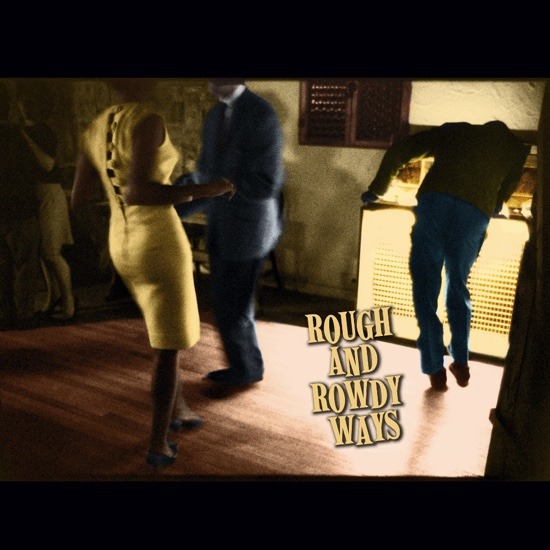Bob Dylan’s new album, Rough and Rowdy Ways, is sold as two discs: nine songs on one CD and one song on the other. It wasn’t necessary to divide them up this way; all 10 songs will fit on a standard 84-minute blank CD with nine minutes to spare. So why did Dylan choose this presentation?
He probably did it to make a point about the near-extinct status of truly long songs. “Murder Most Foul,” his single-disc song, is nearly 17-minutes long—and Dylan needed every one of those minutes to deliver all 1,406 words over the blues trance of a rumbling piano and a sawing viola.
In other words, it’s a truly long song, not just a short song extended by lots of guitar solos. The Velvet Underground’s “Sister Ray,” which at 17:30 is even longer than “Murder Most Foul,” only has 311 words of lyrics, for example. “Sister Ray,” which always shows up on those click-bait lists of “Rock’s Longest Songs,” is not really a long song. It’s a long recording of a short song expanded by instrumental breaks—mind-bendingly brilliant breaks, but a short song nonetheless.
That’s true of many long rock tracks: Jimi Hendrix’s “Voodoo Chile” (14:29 but only 313 words), Dire Straits’ “Telegraph Road” (14:29, 390 words), Television’s “Marquee Moon” (10:41 but only 195 words), Prince’s “Purple Rain” (8:42 but only 208 words), Laurie Anderson’s “O Superman” (8:21 but only 265 words), the Beatles’ “I Want You (She’s So Heavy) (7:47 but only 169 words) and Funkadelic’s “Maggot Brain” (10:20 but only 54 words). And, of course, there’s Iron Butterfly’s interminable “In a Gadda da Vidda” (17:05 but only 154 words).
Some of these are great performances and some of them aren’t, but they are long recordings not long songs. When you start looking for them, it’s surprising how few truly long songs there are.
It wasn’t always this way. Back before recording was invented at the end of the 19th century, a song often piled up verse after verse to not only tell a complicated story but also to comment on the action as it progressed.
When “Little Musgrave and Lady Barnard,” for example, was included in Francis James Child’s 1898 book, The English and Scottish Popular Ballads, one version included 34 verses, another 29. When Richard Thompson’s Fairport Convention recorded it as “Matty Groves” in 1969, it had been cut down to 19 verses and a mere eight minutes. Go back further and Greek singers such as Homer would take several long days to sing their chronicles such as The Iliad and The Odyssey to the accompaniment of a lyre.
Such ambitions went away when the early recording technology limited the length of music that could be captured in one take and played back on one side of a disc. Even when that situation improved, the newly dominant radio industry was increasingly strict about how many minutes of their precious, limited airtime that would allow to any one recording.
In many ways, these technological pressures to compress songs into smaller spaces had a beneficial effect. Forced to squeeze their music into tighter containers, both writers and performers tended to keep the best bits and ditch the rest. Musical ideas were concentrated into hooks, and stories moved quickly from premise to climax.
The key figure in this transition was the much maligned A.P. Carter. You never hear much of him on the Carter Family records—just a few bass harmonies here and there—but it was A.P. who took the dozen-stanza ballads and hymns of the 19th century and boiled them down to the four-stanza pop hits that were the Carter Family’s singles.
Out of the old songs, he created the modern vehicles that allowed his wife Sara’s stunning soprano and her cousin Maybelle’s groundbreaking guitar playing to thrive on the radio. He was the first A&R man of the new industry, the first producer to master the trick of concentration.
But something was lost in this move from long songs to short. What the more succinct numbers gained in efficiency and distilled power, they lost in breadth and depth. A dozen-stanza song can conjure up a whole world with multiple characters and multiple settings in a way that a short song never can. We don’t want to go back to a culture where the average song is 10 minutes long, but neither do we want an extinction of the writing skills necessary to create a good 10-minute song and the listening skills to appreciate it.
Consider, for example, the song “John Hardy,” which was originally published with nine verses by British folklorist Cecil Sharp for his 1916 book, English Folk Songs from the Southern Appalachians. A.P. Carter got it down under three minutes for the 1930 Carter Family version. But then in 1940, Woody Guthrie took the same melody and reinflated into a seven-minute, 17-verse song called “Tom Joad,” which retold the story of John Ford’s movie, The Grapes of Wrath, based on the John Steinbeck novel.
Guthrie’s record was long for a song but still a lot shorter than the film or book. We all have an internal sense of how long a song should be (four minutes), how long a movie should be (two hours) and how long a novel should be (250 pages). It’s good for all of us to be challenged now and then by works that are shorter or longer than what we’re expecting.
One way of looking at American culture is to recognize the two rivers of influence running through it: the sprawling verbosity and visionary sweep of Walt Whitman and jewel-like precision and intense focus of Emily Dickinson. These two poets, who helped us break loose from European culture in the mid-19th century, have personified the maximalist and minimalist poles of American culture ever since.
Dylan signals his allegiance to Whitman on the first track of Rough and Rowdy Ways. That song takes its title, “I Contain Multitudes,” from a famous Whitman stanza in his 1855 poem, “Song of Myself”: “Do I contradict myself?/ Very well then I contradict myself,/ (I am large, I contain multitudes.)” Dylan then goes on to present a song of himself, a catalogue of his multitudinous, often contradictory selves, over the easygoing backing from an acoustic guitar and pedal-steel guitar.
The song is a mere four-and-a-half minutes, but it provides a clue to Dylan’s success with long songs. He’s not the kind of composer who’s going to sustain our interest over seven minutes, maybe more, by introducing successive musical movements the way a Brian Wilson or Charles Mingus might. No, Dylan’s going to do it with language. On older songs such as “Visions of Johanna” or “Hurricane,” he did it by presenting a long, complex narrative. But now he’s doing by borrowing another Whitman technique: the catalogue.
In countless poems, Whitman would start listing particular scenes from the great variety of American scenes, as if they might merge like the dots of a pointillist painting into a picture of the nation. As he writes elsewhere in “Song of Myself”:
Where the cattle stand and shake away flies with the tremulous shuddering of their hides,
Where the cheese-cloth hands in the kitchen, where andirons straddle the hearth-slab, and cobwebs fall in festoons from the rafters;
Where the trip-hammers crash, where the press is whirling its cylinders,
Where the human heart beats with terrible throes under its ribs,
Where the pear-shaped balloon is floating aloft, (floating in it my-self and looking composedly down,)
Where the life-car is drawn on the slip-noose, where the heat hatches pale-green eggs in the dented sand,
Where the she-whale swims with her calf and never forsakes it,
Where the steam-ship trails hind-ways its long pennant of smoke,
Where the fin of the shark cuts like a black chip out of the water….”
Compare that to the way Dylan evokes the broad sweep of American music in similar fashion on “Murder Most Foul”:
Play Tragedy, play Twilight Time,
Take Me Back to Tulsa to the scene of the crime.
Play another one and Another One Bites the Dust,
Play the Old Rugged Cross and in God We Trust.
Ride the Pink Horse down that Long, Lonesome Road,
Stand there and wait for his head to explode.
Play Mystery Train for Mr. Mystery,
The man who fell down dead, like a rootless tree,
Play it for the Reverend, play it for the Pastor,
Play it for the dog that’s got no master.
“Anaphora” is the literary term for that trick of using the same word or phrase to begin multiple lines. It’s especially useful in long poems and long songs, where you need that kind of rhythmic repetition to keep the reader or listener on board for the lengthy journey from first line to last. Nick Cave uses anaphora and catalogue in a similar way on “Baby, I’m on Fire” (15 minutes and 1194 words).
Neither Whitman nor Dylan can rely on a strong melody to fuel the engine, so they have to turn to meter instead, that strong preacher’s cadence that can keep the congregation in the pews for hours—or at least for the 17 minutes of “Murder Most Foul.”
It’s difficult to make a repeating four-or-eight-line chorus work in a long song, because it soon wears out its welcome. There are exceptions, however, such as Don McLean’s “American Pie” (8:33, 873 words)
The latter song anticipated “Murder Most Foul” by also using the death of a popular figure to mark an end of innocence, by also using American music as a thermometer to take the temperature of American culture as a whole. But McLean was able to get away with a repeating chorus, because one never got tired of its delicious hook, perfectly synced to the beat and reinforced by seven long-I rhymes and three -evee rhymes in just five lines.
If you don’t want to keep repeating a full chorus in your long song, you can use a refrain, which is a couplet, a single line or even a half-line that you use to end every stanza. That’s the technique that Dylan uses not only on “Murder Most Foul” but also on “Key West (Philosopher Pirate)” (9:34, 652 words) and “Desolation Row” (11:21, 662 words). It’s also used in Van Morrison’s “Madame George” (9:45, 454 words) and Lou Reed’s “Street Hassle” (10:59, 692 words), both powerful narratives of prostitution and its consequences.
In all these songs, the refrain serves to remind us that all the far-flung events and figures in these digressive songs are ultimately related. In “Murder Most Foul,” the descriptions of John F. Kennedy’s death are tied to the Beatles and Beach Boys, John Lee Hooker and Thelonious Monk, as if the songs were not only a reaction to the murder but also an antidote, as if the rich variety of American life—both heart-sinking and soul-lifting—is reflected in its songs as much as in its headlines.
To get that wide view, to get that perspective on all the different characters (both Jack Ruby and Tom Dooley), on all the different sounds (downhome country and uptown bebop), on all the different locations (the Tulsa massacre and Sherman’s march through Georgia), on all the different feelings that make up the American story, every once in a while you need a long song.




